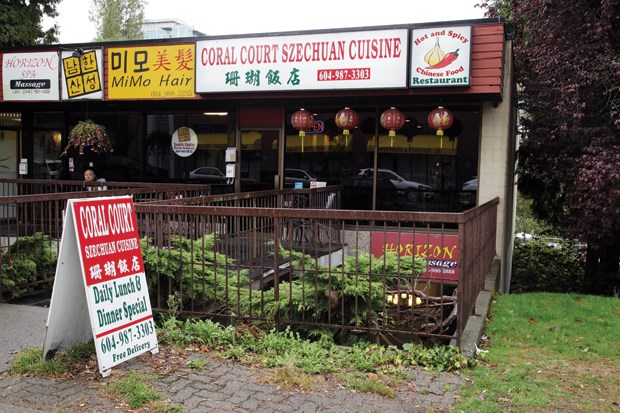Have you ever noticed the bright shimmer that emanates from many dishes in local Chinese cuisine?
It’s like the food has been cooked with a view to its inclusion in a photoshoot; it is glistening, colourful, and strikingly bright.
This can be achieved, in part, through the use of cornstarch. In many Chinese culinary traditions, and especially in North American restaurant extensions of those traditions (most often in those that self-identify as Cantonese, Szechuan or both), a bowl of cornstarch slurry (cornstarch dissolved in water) is kept on hand to finish the dishes.
The slurry is added near completion of cooking, capturing flavoursome pan drippings in its suspension, thickening any cooking liquids present and, applied properly, evenly coating ingredients with a signature shine.
This approach can work out magically, but is also fraught with hazards. For me, if the cornstarch thickening process hasn’t been judicious, the resulting food suffers from an unappealing glueyness that can be cloyingly viscous on the palate. It seems a big risk to take, especially when the food is typically so full of complex and wonderful flavours, hallmarks of so much Chinese cuisine. So why do it?
A new theory on this convention emerged for me out of a recent visit to Coral Court Szechuan Cuisine, the enduring North Shore fixture that for many years lived on lower Lonsdale Avenue, but moved in 2012 down the 100-block of Second Street East. My theory emerged when I considered my ordering habits here and at our other local Chinese restaurants, which, as I have remarked on these pages before, tend to boast long, ambitious menus, some peaking at more than 100 dishes.
One of the things I enjoy most about eating at a Chinese restaurant is the wide variety of flavours I can experience in a single sitting. My visit to Coral Court, accompanied by my wife DJ, supported this indulgence as we tucked into no less than eight dishes between us, all of which arrived at the table, piping hot and lovely to behold, within minutes of each other. Ordering like this is not an uncommon practice, I would suggest, as other tables were similarly laden with myriad plates, and the steady stream of takeout orders leaving the premises all seemed to contain numerous containers.
The diverse meal prompted me to ask myself if, outside the context of eating a multi-course taster menu, I have ever ordered that many dishes in a restaurant that serves European-influenced food. I could not recall such an occasion. The tendency in such restaurants seems to be to order an appetizer, a main course, and possibly dessert. The result of this tried and true ordering formula is that kitchens that follow European traditions are rarely required to produce untold numbers of dishes for each table in the restaurant at once.
Practices like the slow reduction of a sauce over low heat, for instance, are afforded only with time. When, however, you’re preparing many dishes all at once, selected from a huge menu, for every single table in your restaurant, time is limited. You need a quick and efficient method to bind the flavours of your dishes and send them on their merry way to your room full of eager diners.
Our Coral Court meal, comprised mostly of dishes billed by the restaurant as signatures, offered good examples of both the rewards and challenges of cooking with cornstarch.
The best dishes of our meal were vegetarian, in the end, with a spicy eggplant dish stealing the show. Spicy, hefty morsels of eggplant were stir-fried with slivered cloud ear mushroom and strips of bell peppers and carrots, and were covered in a piquant, deeply flavoured sauce.
On rice, this dish would likely be a single diner’s sufficiency on its own. Chili and Garlic Spiced Green Beans, a perennial Szechuan favourite, delivered on all fronts as well. The beans were fried until seared on the exterior but retained a bit of crunch, while the garlic adopted a deep golden caramelization that was nicely complemented by a red chili heat.
The house special Ginger Beef was tasty, if a touch tough to the bite, with a tangy, slightly sweet sauce studded with crispy slivers of celery and carrot. Wontons with spicy chili garlic sauce featured a generous half dozen tightly packed dumplings swimming in soy sauce-infused chili oil with scallions and worked well in terms of flavour, though the oil in which they were bathed proved overwhelming by the end of the dish. Tan Tan Noodle soup was a curious affair; the soup part had evidently absorbed completely into the noodles, leaving them swollen and glistening with a thick, rich, peanut-heavy sauce instead. I enjoyed the noodles, ultimately, as they were so nicely seasoned with peanuts, garlic, ginger, and a host of other complex flavours.
Missing the mark entirely, in our opinion, was a dish of Ma Po tofu, a hefty serving of very soft, nearly custard-like cubes of tofu in a particularly thick, gelatinous sauce dominated by the uniquely citrusy, perfumed flavour of the Szechuan peppercorn.
The flavour was regrettably monotone while the texture was off-putting. Our order of Vegetable Chow Mein made very liberal use of celery and was inoffensive, if unremarkable. Coral Court shines brightest, I feel, when it lets its ingredients speak for themselves with minimal manipulation.
Our meal was $78 before gratuity. coralcourtschezuan.com. 604-987-3303
Chris Dagenais served as a manager for several restaurants downtown and on the North Shore. A self-described wine fanatic, he earned his sommelier diploma in 2001. He can be reached via email at [email protected].



